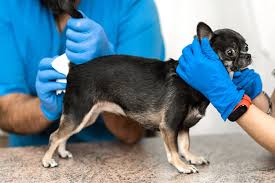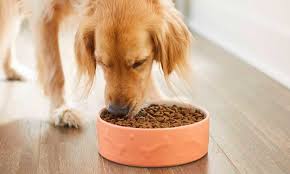How much homemade dog food to Feed: A Comprehensive Guide
Feeding your furry friend homemade dog food can be a rewarding and healthy choice. However, determining the right amount to feed your dog can be tricky. When dogs don’t get enough to eat, they risk becoming overweight and sick. This guide aims to help you navigate the complexities of feeding your dog homemade food, ensuring they get the perfect balance of nutrients for a happy, healthy life.
Understanding the Benefits of Homemade Dog Food
Control Over Ingredients
One of the biggest benefits of homemade dog food is the control it gives you over what goes into your dog’s meals. You can select high-quality, fresh ingredients, ensuring your dog isn’t consuming harmful additives, preservatives, or fillers often found in commercial dog food.
Customization for Health Needs
Not all dogs have the same nutritional requirements, so you should consider your specific dog needs. If you make your dog’s food at home, you can tailor it to their dietary needs and better figure out how much food should I feed. Whether your dog has food allergies, a sensitive stomach, or specific nutritional deficiencies, you can tailor their diet to address these issues effectively.
Enhanced Nutrition
Homemade dog food can be more nutrient-dense compared to some commercial food options. Fresh food retains more vitamins and minerals essential for your dog’s health. A well-balanced homemade diet can improve coat condition, increase energy levels, and improve overall health, making your dog love this food even more. For instance, if your dog weighs a specific amount, you can adjust the ounces of food per meal to match their body weight requirements.
Better Taste and Enjoyment
Most of the time, homemade dog chow tastes better than store-bought. Because of the fresh, natural flavors, your beloved pet may develop healthier eating habits and feel more fulfilled after eating homemade meals. Mixing ingredients in a food processor can make meals taste better and have better texture.
Bonding and Trust
Preparing food at home for your dog can strengthen the bond between you and your pet, especially when you figure out how much food per day they need. Your care and effort in making their meals can enhance their trust and affection towards you. Many dog owners find that making your dog food is a rewarding experience.
Transparency and Peace of Mind
When you make your dog’s food at home, you know exactly what they eat. This transparency gives you peace of mind, knowing that you provide the best dog food for your beloved pet. This is particularly important when determining how much food to give based on your dog’s weight and activity level.
Switching to homemade dog food requires careful planning and knowledge to ensure your dog receives a balanced diet. Consulting a vet can help perfect your homemade recipe for an adult or small dog. Please consult your veterinarian or a pet nutrition expert to create a meal plan that meets your dog’s needs and supports their overall health and well-being.
They can help you increase the amount of homemade food to feed your dog based on factors like dog food companies and the dog food industry. This comprehensive approach ensures that your dog may enjoy the numerous benefits of a homemade diet without missing any essential nutrients.
Avoiding Food Allergens for dog food at home
Making dog food at home ensures you know exactly what’s going into your pet’s meals. You can carefully select safe and beneficial ingredients for your dog, reducing the risk of allergic reactions and creating a DIY dog food that meets their needs. This careful selection ensures that you give your dog the best possible nutrition.
How to make homemade dog food: A Step-by-Step Guide
Step 1: Consult with Your Veterinarian
Before making dog food, consult your veterinarian to understand your dog’s dietary needs. This is especially important if your dog has any health conditions or specific requirements. Your vet can help you determine the right balance of nutrients and the appropriate amount of daily food based on your dog’s body weight and activity level. Knowing how much to feed my dog is crucial to avoid giving too much or too little.
Step 2: Gather Ingredients and Tools
Ingredients for making homemade dog food at home:
- Protein source (chicken, beef, turkey, fish) is essential when you’re making your own dog food.
- Carbohydrates (rice, sweet potatoes, oats)
- Vegetables (carrots, peas, spinach)
- Healthy fats (olive oil, fish oil)
- Supplements (vitamins and minerals as recommended by your vet)
Step 3: Prepare the Protein
To get rid of any bad germs:
- Cook the protein completely to ensure it’s safe to include in your pet food.
- Ensure it’s cooked without harming your dog, like seasonings or additives.
- When the meat is cooked, slice it into little pieces your dog can easily consume.
Step 4: Cook the Carbohydrates
Separate the carbs and cook them as directed. A handmade diet should consist primarily of grains like rice, sweet potatoes, and oats. For your dog’s digestive health, make sure these are cooked thoroughly.
Step 5: Prepare the Vegetables
Steaming or boiling is preferable to retain the maximum amount of nutrients. Use a food processor if you want a finer consistency that blends well with other ingredients when making dog food at home.
Step 6: Mix the Ingredients
Combine the protein, carbohydrates, and vegetables in a large mixing bowl. Add healthy fats like olive or fish oil, essential for your dog’s coat and skin health, as part of your homemade recipe, which is important when making your own dog food. If you don’t know how much to feed your dog, start with a small portion and adjust based on your dog’s weight and energy levels, similar to how you’d feed an adult dog.
Step 7: Add Supplements
Depending on your dog’s specific needs, you should add supplements to their homemade dog food, a key part of making his food nutritious. Common supplements include calcium, fish oil, and a multivitamin. Your vet can recommend the appropriate supplements and dosage for your dog needs. This step ensures the food you feed your dog is nutritionally complete.
Step 8: Portion the Food
Measure the appropriate amount of food to feed your dog based on weight and daily nutritional needs. Portion the food into storage containers. A food processor can help you blend the food to the desired consistency, especially if your dog prefers a smoother texture, which is helpful when making your own dog food. Knowing how much per portion is essential for maintaining a balanced diet, whether feeding an adult or small dog.
Step 9: Store the Food
Store the prepared food in airtight containers. You can refrigerate portions that will be used within a few days and freeze the rest. Food in the fridge should be used within a week, while frozen dog food can last longer.
Tips for Creating Healthy Homemade Dog Food
Creating healthy homemade dog food begins with understanding your dog’s nutritional needs, especially when making her food from scratch. Consult with a veterinarian to ensure you’re meeting dietary requirements. Use high-quality ingredients, including lean meats, vegetables, and grains, while avoiding harmful additives like onions, garlic, and excessive salt. Balance the diet with the right proportions of protein, carbohydrates, and fats to support your dog’s health.
DIY Homemade Dog Food Recipes for a Balanced Diet
A simple recipe might include cooked chicken, brown rice, and mixed vegetables. For variety, consider recipes with beef, sweet potatoes, and spinach. Ensure each recipe contains essential nutrients like protein, vitamins, and minerals. Adjust recipes based on your dog’s size, age, and activity level to maintain optimal health.
how much homemade dog food to Feed?
Determining how much homemade food to feed your dog depends on weight, age, metabolism, and activity level. A general guideline is to feed about 2-3% of their body weight daily, divided into meals. Monitor your dog’s weight and adjust portions to maintain a healthy weight and condition.
Best Practices for Measuring How much homemade food to Feed
Measuring homemade dog food accurately ensures your dog receives proper nutrition. Calculate portion sizes based on your dog’s daily caloric needs and adjust for treats or supplements to avoid overfeeding, especially if you’re dealing with pounds of food. Regularly monitor your dog’s body condition and adjust feeding amounts accordingly.
Factors Affecting How Much Homemade Dog Food to Feed
Several factors influence how much homemade dog food your pet needs, including breed size, age, activity level, metabolism, and health conditions. Larger breeds, such as a pound dog, may require more food, while older dogs or those with lower activity levels may need fewer calories. Consult a veterinarian to tailor feeding amounts to your dog’s needs, considering factors like dry dog food and dog treats to ensure a balanced diet.
Essential Nutrients in Healthy Homemade Dog Food
Healthy homemade dog food should include essential nutrients such as protein, carbohydrates, fats, vitamins, and minerals to meet your pet food requirements. Proteins from sources like lean meats or eggs support muscle growth and repair. Balance these nutrients to meet your dog’s daily requirements.
Ensuring the Right Amount of Homemade Dog Food to feed your dog
Ensuring the right amount of homemade dog food involves understanding your dog’s nutritional needs and adjusting portions accordingly to figure out how much to feed. By preparing balanced meals with quality ingredients and measuring portions accurately, you can support your dog’s overall health and well-being with homemade food.
It’s important to gradually transition to a new food, mixing it with the current diet to avoid digestive upset. For instance, start by mixing small amounts of the latest food with the old, incrementally increasing the daily dog food diet over several days.


